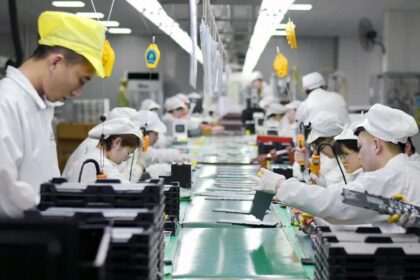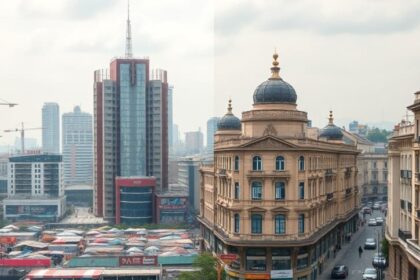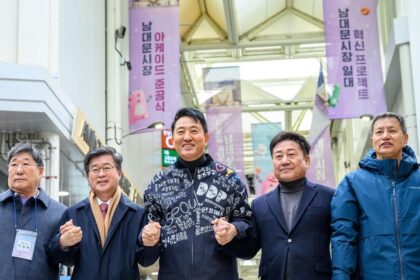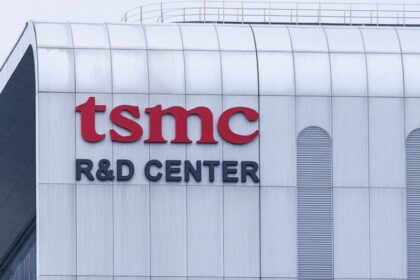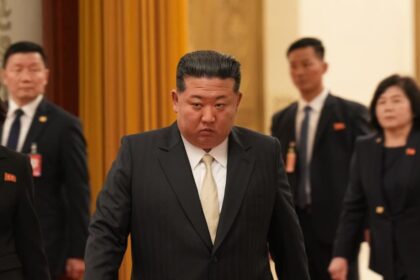Heatwaves Ignite a Global Boom in China’s Cooling Economy
As record-breaking heatwaves sweep across the globe, the demand for air conditioners and other cooling products has surged to unprecedented levels. Nowhere is this more evident than in China, where both domestic and international sales of air conditioners are soaring, transforming the country into the epicenter of the world’s “cooling economy.” This article explores how extreme weather, shifting consumer habits, and technological innovation are fueling a dramatic rise in China’s cooling exports, with ripple effects felt from Northeast China to the heart of Europe and beyond.
- Heatwaves Ignite a Global Boom in China’s Cooling Economy
- How Heatwaves Are Changing Consumer Behavior in China
- Europe’s Reluctant Embrace of Air Conditioning
- China’s Cooling Exports: Meeting Global Demand
- Why Are Chinese Brands Dominating the Cooling Market?
- Challenges and Opportunities in the Global Cooling Economy
- Innovation: The Key to Sustainable Growth
- The Broader Impact: Health, Society, and the Environment
- In Summary
How Heatwaves Are Changing Consumer Behavior in China
In recent years, China has experienced some of its hottest summers on record. Cities in the traditionally cooler northeast, such as Liaoning, Jilin, and Heilongjiang provinces, have seen temperatures soar above 35 degrees Celsius. For many residents, this has turned summer into what one described as a “relentless sweat bath.” Even those who previously relied on electric fans are now turning to air conditioners as a necessity rather than a luxury.
Data from Chinese e-commerce giant JD.com illustrates this shift. Since June, air conditioner transactions on the platform have increased by over 60 percent year-on-year, with customer orders surging by nearly 90 percent. In the first half of July alone, purchases in Jilin, Liaoning, and Heilongjiang soared by 25 times, 10 times, and eight times, respectively, compared to the previous year. Notably, the number of first-time buyers in these provinces jumped by over 800 percent year-on-year, signaling a fundamental change in consumer attitudes toward cooling appliances.
Retailers and manufacturers have scrambled to keep up. At the Ouya Shopping Centre in Changchun, customers crowd the home appliance section, eager to learn about different air conditioner models and prices. Popular brands like Hisense have ramped up production at facilities in Shandong, Zhejiang, and Guangdong, yet some models have still sold out in northern stores. To ensure timely installations, companies have even launched a “south-to-north” workforce transfer, dispatching after-sales service teams to the northern regions for emergency support.
This surge in demand is not limited to air conditioners. Sales of mini fans, portable cooling devices, and even hats fitted with solar-powered fans have soared, reflecting a broader trend toward personal cooling solutions. According to Alibaba.com, sales of portable small fans, mobile air conditioners, and icemakers have increased by nearly 77 percent year-on-year in the past month alone.
Europe’s Reluctant Embrace of Air Conditioning
While air conditioning is ubiquitous in much of Asia and North America, Europe has long resisted widespread adoption. Only about 20 percent of European households have air conditioning, with even lower rates in Britain (5 percent) and Germany (below 3 percent). Several factors have contributed to this reluctance:
- High proportion of rental housing, making permanent installations difficult
- Expensive electricity and high energy costs
- Strong sustainability values and environmental concerns
- Aging housing stock lacking pre-installed ducts
- Regulations in historic areas banning outdoor units to preserve building appearances
However, the severity and persistence of recent heatwaves are beginning to erode these barriers. In late June and early July, Southern Spain reached 46 degrees Celsius, France recorded its hottest June day, and red alerts were issued across Austria, Slovenia, and Bosnia. Germany faced temperatures up to 38 degrees Celsius, leading health officials to urge citizens to hydrate and stay indoors. Electronics stores in cities like Stuttgart quickly sold out of air conditioners, and installers reported being fully booked for weeks.
Markus Schmitz, a German AC installer, captured the changing mood:
“Europe is starting to genuinely need cooling. It’s no longer a luxury, it’s becoming a necessity.”
The International Energy Agency predicts that by 2050, the number of air conditioning units in the EU will more than double from 2019 levels, reaching 275 million. This shift is creating enormous opportunities for manufacturers—especially those in China.
China’s Cooling Exports: Meeting Global Demand
China is the world’s largest producer and exporter of air conditioners, accounting for nearly 80 percent of global production capacity. As heatwaves intensify, Chinese manufacturers are seeing explosive growth in both domestic and international markets. According to the General Administration of Customs, China’s air conditioner exports reached 46.81 billion yuan ($8.4 billion) in the first seven months of 2025, up 4.9 percent year-on-year. Exports to Europe surged by 28.9 percent, reaching 12.92 billion yuan.
Specific brands have reported remarkable results:
- Midea: European air conditioner sales jumped 35 percent in the first half of 2025, with a 68 percent surge in France. The company’s AI-powered Solstice model, which cuts unnecessary energy use by over 30 percent, has seen strong sales in Greece, Cyprus, Spain, and Italy. Midea’s PortaSplit, designed for easy self-installation, has sold over 80,000 units in Germany alone.
- Hisense: First-half sales in Italy rose more than 20 percent, and sales doubled in Hungary. The company has focused on energy-efficient and environmentally friendly products to meet Europe’s strict regulations.
- Gree: With a presence in 48 European countries, Gree has reported sustained growth in AI-powered, energy-efficient models.
- Haier: Achieved a 30 percent year-on-year sales growth in Europe, with leading positions in Italy and Spain.
Chinese cooling products are not limited to air conditioners. Exports of fans, refrigerators, and other refrigeration appliances have also surged. From January to May 2025, China exported $9.45 billion worth of household air conditioners (up 17.8 percent year-on-year), $5.65 billion in fans (up 7.1 percent), and $3.32 billion in refrigerators (up 5.1 percent).
Why Are Chinese Brands Dominating the Cooling Market?
Several factors explain China’s dominance in the global cooling market:
- Comprehensive Industrial System: China’s vast manufacturing ecosystem enables seamless coordination across the entire value chain, ensuring product quality and price competitiveness.
- Innovation and Adaptation: Chinese companies are quick to develop products tailored to local markets, such as Midea’s PortaSplit for Germany and AI-powered models that meet Europe’s energy efficiency standards.
- Focus on Energy Efficiency: With Europe’s strict environmental regulations, Chinese brands have shifted from competing solely on price to emphasizing value, energy efficiency, and low-carbon solutions.
- Strategic Supply Chains: Manufacturers have optimized logistics and after-sales support, including workforce transfers to meet installation demand in new markets.
Feng Xuezhi, general manager of Hisense Europe’s air conditioning division, explained the new approach:
“Europe has strict rules when it comes to energy and environmental compliance, which helps distinguish our products. With climate pressures rising, whoever can offer low-carbon, efficient and intelligent solutions will stand out.”
Challenges and Opportunities in the Global Cooling Economy
Despite the boom, the cooling economy faces significant challenges. In Europe, high installation costs, expensive electricity, and regulatory hurdles still limit widespread adoption. A typical air conditioner in Germany costs 600-800 euros, with installation often exceeding 1,500 euros. Renters need landlord approval and may have to remove the unit when moving. High energy costs—about 0.30 to 0.40 euros per kilowatt-hour in Berlin—mean that running an air conditioner continuously can push summer electricity bills above 200 euros.
Nevertheless, persistent heat and health concerns are shifting public attitudes. Younger families and middle-income households are now driving demand, and retailers report that air conditioners are selling out faster than ever. Unieuro, a major Italian electronics retailer, said sales of air conditioners doubled in late July compared to the previous year, with Chinese brands accounting for more than 60 percent of the share.
In other regions, such as India, the picture is more mixed. While heatwaves have driven spikes in sales, unseasonal rains and fluctuating temperatures have led to lower-than-expected annual growth. India’s AC industry remains heavily dependent on Chinese imports for key components, highlighting China’s central role in the global supply chain.
Innovation: The Key to Sustainable Growth
As climate change accelerates, the need for sustainable cooling solutions becomes ever more urgent. Chinese manufacturers are investing heavily in research and development to create products that are not only energy-efficient but also environmentally friendly. AI-powered models, smart sensors, and low-carbon refrigerants are becoming standard features in new air conditioners.
At the 2024 IFA in Berlin, Hisense unveiled a series of products with high energy efficiency and low climate impact. Midea’s Solstice model uses artificial intelligence to optimize energy use, while the PortaSplit offers easy installation for renters and those in older buildings. These innovations are helping Chinese brands gain recognition and market share in regions with strict environmental standards.
The Broader Impact: Health, Society, and the Environment
The rise of the cooling economy has far-reaching implications. On the positive side, access to air conditioning can reduce heat-related illnesses and deaths, improve productivity, and enhance quality of life—especially for vulnerable populations such as the elderly and young children. The World Health Organization has warned that heatwaves pose serious health risks, and cooling solutions are an important tool in mitigating these dangers.
However, the rapid expansion of air conditioning also raises concerns about energy consumption and greenhouse gas emissions. If not managed carefully, increased demand for cooling could exacerbate the very climate change that is driving the need for these products. This underscores the importance of energy-efficient technologies, renewable energy integration, and smart urban planning.
In Summary
- Record-breaking heatwaves are driving a global surge in demand for air conditioners and cooling products, with China at the center of this boom.
- Chinese consumers, especially in the traditionally cooler northeast, are rapidly adopting air conditioners as a necessity.
- Europe, long resistant to air conditioning, is now experiencing unprecedented demand due to persistent heatwaves and changing attitudes.
- China accounts for nearly 80 percent of the world’s air conditioning production, with exports to Europe and other regions rising sharply.
- Chinese manufacturers are focusing on energy efficiency, innovation, and local adaptation to meet strict environmental standards and diverse market needs.
- The cooling economy presents both opportunities and challenges, including supply chain dependencies, energy consumption concerns, and the need for sustainable solutions.
- As climate extremes worsen, the global demand for cooling is likely to continue rising, making innovation and sustainability key priorities for the industry.





